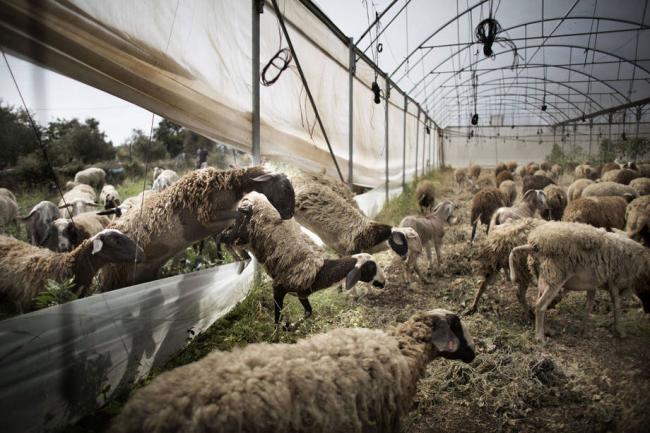
UN agricultural agency launches programme to eradicate deadly goat disease
Peste des petits ruminants (PPR) – also known as sheep and goat plague – is highly lethal to small ruminants. The annual global damage due to the disease is estimated to be between $1.4 and $2.1 billion.
“Wiping out PPR will have a major positive impact on the lives of pastoralist communities in all developing countries and directly support global efforts to end poverty and hunger by 2030,” said UN Food and Agricultural Organization (FAO) Director-General José Graziano da Silva in a news release announcing the launch of the $996.4 million FAO-World Organisation for Animal Health (OIE) initiative.
According to FAO, an estimated 300 million small-scale farming families depend on small ruminants for food and income.
For instance, a recent outbreak in India caused $180 million in losses. Similarly, a series of epidemics in Kenya in 2006-2008 killed 1.2 million small ruminants with losses exceeding $23.5 million and a 2.1 million litre drop in milk production.
“When it comes to viral animal diseases, much attention falls on the threats they pose to human health – but their effects on economic growth, human livelihoods, quality nutrition and food security can be equally devastating. That's why this campaign needs wide support,” Graziano da Silva added.
The disease is however, easily preventable with inexpensive vaccines that can be administered at low cost and that will protect the animal for its entire life.
The virus also has a relatively short infectious phase and does not survive for long outside a host, making it an ideal candidate for a concerted eradication effort, the FAO noted in the release.
Explaining that tools to tackle the disease are already available, Monique Eloit, OIE Director-General said: “We have international standards for surveillance and diagnosis of PPR, a global system to report outbreaks, and standards for vaccines that are highly effective when applied appropriately.”
“So all the tools are available to us, and are integrated into the plan. Its successful implementation now relies on the capacity of Veterinary Services at national level – the OIE is committed to provide them with ongoing support,” she added.
Global strategy backed by regional road maps
The news release further noted that the first five-year phase of the 15-year programme is now ready to be put into action and consists of a global strategy backed by nine regional road maps.
In this initial portion, focus is placed on countries where the disease is known to exist or where its status has never been assessed. This will involve activities to raise awareness among farmers, build their capacity to prevent and contain the disease, strengthen national veterinary health services and systems for control of PPR and other diseases, and implement targeted vaccination campaigns.
The plan also aims to improve national production models and help herders build the strongest, most resilient livelihoods with their animal resources.
Together, the two agencies will coordinate the global efforts of governments, regional organizations, research institutions, funding partners and livestock owners.
A pledging conference to secure financial support for the first five-year plan will be organized early next year.
Replicating earlier success
The news release also mentioned that this is not the first time the two global agricultural organizations have combined their forces to rid the world of a costly plague.
The PPR initiative is modelled on the successful effort to eradicate rinderpest, a similar disease that affected cattle, buffalo and wildlife. In 2011, this campaign achieved success and it was the first time an animal disease had been eradicated from the planet.
Meeting global demand
With the world population anticipated to rise to over 9.7 billion by 2050, FAO noted that small ruminant production is expected to rise with growing demand for meat and milk, growth that is generating new opportunities for producers, processers, and sellers.
“With that comes stronger interest from governments and industry to make supply chains more reliable and the movement of animals safer,” it said.
Photo: FAO/Marco Longari
Source: www.justearthnews.com
Support Our Journalism
We cannot do without you.. your contribution supports unbiased journalism
IBNS is not driven by any ism- not wokeism, not racism, not skewed secularism, not hyper right-wing or left liberal ideals, nor by any hardline religious beliefs or hyper nationalism. We want to serve you good old objective news, as they are. We do not judge or preach. We let people decide for themselves. We only try to present factual and well-sourced news.







